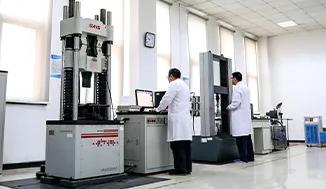Choosing the Right MIG Wire for Cast Iron Welding Applications
Understanding Cast Iron MIG Wire A Comprehensive Guide
When it comes to welding, the choice of filler material can be just as important as the welding method itself. For industries that rely on durable, long-lasting joints, cast iron MIG (Metal Inert Gas) wire is an essential resource. This article will explore the properties, applications, advantages, and considerations involved in using cast iron MIG wire for welding projects.
What is Cast Iron MIG Wire?
Cast iron MIG wire is a specialized type of welding wire designed specifically for the arc welding of cast iron components. Cast iron, known for its high carbon content and brittleness, presents unique challenges in welding due to its tendency to crack during and after the welding process. The MIG wire used for welding cast iron is engineered to address these challenges effectively.
Typically, cast iron MIG wire is made from a combination of materials that can withstand the specific properties of cast iron. The wire is usually alloyed to include elements like nickel and manganese, which enhance flexibility and ductility in the welded joint. This is critical because the goal of using MIG wire with cast iron is not just to bond the pieces but to maintain the integrity and mechanical properties of the materials involved.
Properties of Cast Iron MIG Wire
One of the standout features of cast iron MIG wire is its ability to accommodate the thermal cycles during welding. When welding cast iron, thermal expansion and contraction can lead to significant stress, potentially resulting in cracks. The composition of cast iron MIG wire mitigates these risks by providing a weld that is more resistant to thermal stress.
In terms of mechanical properties, welds made with high-quality cast iron MIG wire demonstrate good tensile strength, ductility, and impact resistance. These properties are crucial for components exposed to heavy loads or dynamic stresses, making cast iron MIG wire a preferred choice in various industrial applications.
Applications of Cast Iron MIG Wire
The applications of cast iron MIG wire are extensive and diverse. Industries that commonly utilize this welding wire include
1. Automotive Repairing cast iron engine blocks and other components in vehicles. 2. Mining Welding cast iron parts in heavy machinery that requires durable joints to withstand harsh environments. 3. Manufacturing Producing cast iron products, such as machine bases and housings. 4. Art and Sculpture Artists and sculptors often use cast iron MIG wire for creative metalwork, enabling them to join complex designs effectively.
cast iron mig wire

With cast iron being a staple in various sectors, the demand for reliable MIG welding solutions is continually growing
.Advantages of Using Cast Iron MIG Wire
There are several benefits to using cast iron MIG wire
- Ease of Use MIG welding is known for its user-friendliness compared to other welding methods, making it accessible even for less experienced welders. - Speed MIG welding allows for faster welding processes, which can lead to higher productivity in industrial settings. - Clean Finish The MIG process produces less spatter and cleaner welds, which is advantageous in applications where aesthetics are also important.
Moreover, the ability of cast iron MIG wire to join dissimilar materials provides further versatility in welding projects.
Considerations When Using Cast Iron MIG Wire
While cast iron MIG wire offers numerous advantages, several factors must be considered
- Pre-Welding Preparation Proper joint preparation is crucial for successful welding. Cleaning the surfaces of contaminants like oil, rust, and paint ensures better bonding. - Welding Parameters Adjusting the voltage, wire feed speed, and travel speed is essential for achieving optimal results. Incorrect settings can lead to defects in the weld. - Post-Weld Heat Treatment Depending on the application, post-welding heat treatment may be necessary to relieve stress and enhance the final properties of the weld.
Conclusion
Cast iron MIG wire is an invaluable tool for welding professionals across various industries. Its unique properties allow for strong, reliable welds on cast iron components, effectively addressing the challenges posed by this material. By understanding how to effectively use cast iron MIG wire, welders can ensure that their projects meet the necessary durability and performance standards, ultimately leading to greater success in their endeavors.
-
Best MIG Welding No Gas Flux Core Solution – Easy, Portable & Clean WeldingNewsJul.08,2025
-
7018 Welding Rod 3/16 - High Strength, Low Hydrogen Electrodes Wholesale 3/32 Welding Rod 7018 Suppliers & China 7018 AC Welding Rod FactoryNewsJul.08,2025
-
High Quality MIG Aluminium Welding Wire - Wholesale Factory Prices from China SuppliersNewsJul.07,2025
-
High-Quality Gasless Aluminum Welding Wire China Gasless Aluminum MIG Wire SupplierNewsJul.07,2025
-
High Quality Ordinary Welding Rod for Pipes – Reliable China Welding Rod 7016 SupplierNewsJul.06,2025
-
Welding Wire 0.9 mm ER70S-6 Supplier Wholesale Manufacturers & FactoriesNewsJul.06,2025


